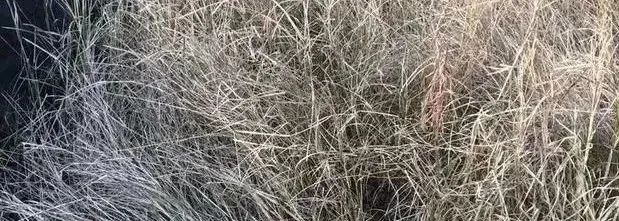With the withdrawal of paraquat, the sales volume has increased year by year and it has become one of the most widely used herbicide varieties. However, due to years of use, weed resistance has become stronger and stronger, and the weeding is not complete, so it has no effect on some malignant weeds. In order to solve these problems, we recommend an excellent formula of glyphosate – carboxylic · GLyphosate, completely solve the problem of incomplete weeding.
1, weeding principle
Ethyl carboxylic · glyphosate is a kind of herbicide composed of ethylammonium phosphine and ethyl fluoroether in a certain proportion. Glyphosate is a broad – spectrum herbicide and an inhibitor of glutamine synthase. Widely used in non-farmland and orchard, rubber garden and other annual graminae and broad-leaf weeds control.
However, the effect on some common weeds is not ideal, such as: red heart chenoposti, Abutilon theophrasti, porus malus, humulus scandens, etc. Ethyl carboxyfluoroxane is a diphenyl ether type herbicide. It is the inhibitor of porphyrin oxidase. Under light conditions, it reacts with chloride ions to produce tetrapyrrole, which is toxic to cells, and achieves the purpose of killing weeds. The synergistic effect of the two compounds is obvious, which can completely solve the problem that phosphonate is not complete in weed control, and improve the killing effect of phosphonate on some malignant weeds such as sophora japonicus, hedonopsis abutilon, Abutilon theophrasti, Porus malus and Humulus scandens.
2. Main features
(1) weed is wider: straw ammonium phosphonic carboxy after grass ether mixed with b, make up for each other in aspects of control spectrum, a broader range of weeding weeding, not only can kill ordinary annual and biennial weed, also can thoroughly kill small fleabane, eleusine indica, hearts quinoa, abutilon, cleavers, humulus scandens, iron amaranth, amaranthus retroflexus etc. One of the most difficult of the prevention and control of weeds.
(2) Better quick effect: weeds will have poisoning symptoms 1 day after the application of this agent, and weeds will die completely in 3 ~ 5 days. The better the light, the higher the temperature, the smaller the weeds and the faster the grass dies.
(3) Long retention period: the herbicide with this agent can completely solve the problem that ammonium phosphonate is not completely weeded, and can completely eradicate the ground and underground parts of weeds. The retention period can reach about 35 days, which is 5 times that of ammonium phosphonate single agent.
(4) Good safety: as long as the agent is not sprayed on crops, it will not produce harm to crops, and it is safer for crops. After being applied to farmland soil, it can be rapidly degraded by soil microorganisms. The general safety interval is only 5 days, and it is also highly safe for the next crop.
3. Applicable crops
Ethyl ammonium carboxy, grass phosphonic herbicide is mainly used for non-cultivated land weeding, roadside river bank mowing, weeding behind the house, apples, grapes, oranges, pears, litchi and mango orchard, plantations and other leading weeding, nursery, sugar cane, corn, cotton, peanuts, soybeans and other crops and row weeding, rice, maize, etc before sowing or planting crops before germination after weeding, etc.
4. Prevention and control objects
Is mainly used for the prevention and treatment of purslane, amaranthus retroflexus, quinoa, amaranth, abutilon, small fleabane, eleusine indica, hearts quinoa, abutilon, cleavers, humulus scandens, iron amaranth, amaranthus retroflexus, lepidium apetalum, chickweed, xanthium sibiricum, “mai niang, digitaria, barnyard grass, wild barley, lolium multiflorum, green bristlegrass, setaria glauca, wild, wild corn, wheat bud, duck curve mans hair grass, festuca, smartweed, wil, morel, bitter radicchio Vegetable, field thistle, field convolute, dandelion, etc. It is especially effective to the malignant weeds such as the most difficult to prevent and control, such as weed, herb, abutilon theophrasti, abutilon theophrasti, porchweed, humulus scandens, iron amaranth and amaranth retroflexus.
5. Main dosage forms
At present, there are a number of manufacturers in China registered for production. Common dosage forms are: 20%, 21%, 22%, 32% ethyl carboxylic · ammonium glyphosate can be dispersed oil suspension agent, 20% ethyl carboxylic · ammonium glyphosate microemulsion, 20% ethyl carboxylic · ammonium glyphosate can be solution agent.
6. Use technology
(1) non-arable land, roadside, ditch, before and after the house weeding: can be used in the vigorous growth of weeds, each time with 20% dispersed oil suspension 300-400 ml/mu, 30 ~ 50 kg of water uniform spray, general weeds 3 ~ 5 days can die.
(2) apple, pear, grape, citrus, mango, banana orchard interrow weeding, can be in the vigorous weeds growth period, each mu with 20% microemulsion 200-400 ml, add 30 ~ 50 kg of water, plus the protective cover on the interrow weeds evenly spray. Can quickly kill weeds between rows.
(3) corn, peanut, soybean and other crops before sowing or sowing seedlings before use, each mu with 20% ethyl carboxylic · glyphosate dispersive oil suspension agent 200 ~ 400 ml, add water 30 ~ 50 kg uniform spray, can quickly kill weeds in the field, no impact on the next crop.
Post time: Mar-14-2022


